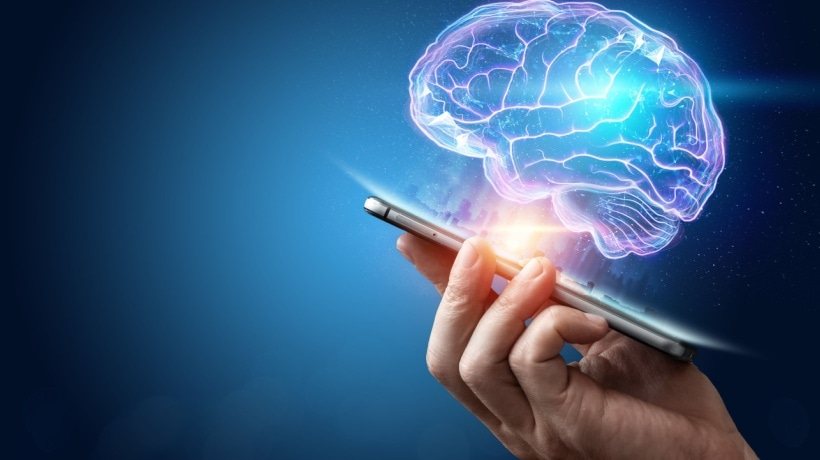Microlearning In The Workplace: How Is Digital Transformation Affecting L&D?
We’ve all talked plenty about what ‘learning’ really is, in the real world, this past couple of years. We know that outside work, when people need to find out how to do something, they google or watch a video on YouTube. But is this really learning, and does that really matter? Do we need to memorize how to do something, or shall we just look it up each time? Digital technology has transformed how we study, how we get information, even whether we bother to memorize or internalize and learn certain things.
Resource-Based Content
If replicated in the workplace, we’d think of this as a resource-based approach. At work learning has traditionally meant ‘remembering and knowing stuff you might need for your job’ – a combination of knowledge and skills often referred to as ‘capability’. But the more businesses digitally transform, the less need there is for capability in this sense and, in theory, the easier it’s become to get information and guidance on demand. “Just in time, not just in case”, as the saying goes.
There is less need for learning in the workplace and more need for what Learning & Performance expert Nick Shackleton-Jones refers to as ‘learning elimination’, for L&D to “design and create resources and guidance that accelerate performance in a wide variety of roles – paving the way for a business model that can deliver greater performance with a fluid workforce and lower levels of capability, and at lower operating costs”.
Only a few organizations provide an equivalent digital infrastructure and content culture that’s genuinely multi-device and resource-orientated – although this is starting to change. There is a growing recognition that employees need less formal learning and more resources to support them in their work.
The idea of ‘resources not courses’ has been with us for many years, but is only really starting to take off now as we move from the assumptions and expectations inherent in ‘eLearning’, to the broader, more contemporary notion of ‘digital learning’.
This is how many people are describing L&D in relation to digital transformation. But does this go far enough? The answer is in the name! ‘Digital learning’ is arguably not truly transformative, because it still talks of learning. It’s as if L&D won’t let go. Digital learning suggests a transitional status quo, when where we really need to get to is ‘digital content‘ or even just ‘digital’, of which digital learning is a subset!
This may seem to be splitting hairs—just a question of semantics—but how these terms are used does shine a light on where we’re truly at in terms of so-called “digital transformation” for L&D. In other words, we’re not there yet.
A Design-Thinking Approach
Nick Shackleton-Jones is right to look ahead and promote the resource-based approach. But he understates the enduring need for some formal learning experiences. Whether identifying what resources are needed when and where, or defining and designing longer or shorter form learning content, it’s more essential than ever to adopt a user-centered design methodology.
At Kineo we have tweaked our process to be more design-thinking in style. This means far greater emphasis on analyzing the problem, defining exact user needs and nailing down content, as well as iterative prototyping to help clients visualize the solution and to help us fine tune the user experience.
Putting The User First
At the heart of this approach is the user. How do they want it? In what format or channel? When and where? What will make the content as easy as possible to access and to use at the point of need i.e. a good user experience (UX)? This bottom-up approach reflects the need to make sure what’s delivered is what’s actually needed. Is it information or guidance given just in time, or more of an upskilling exercise? It may be all about resources, or some structured content, or a bit of both – maybe blended with a social dimension, or an ongoing curated solution supported by analytics and data.
How Much Time Have You Got?
Considering employees have 1% of their time at work – or 25 minutes a week, according to Bersin, “to slow down and learn” (it could actually be less than that, I reckon), the duration of a piece of content is more critical than ever. Never mind the amount of time trainers or Subject Matter Experts may deem necessary to learn their content! We’re in what Bersin refers to as a “shift toward employee-centric design”.
So put yourself in the employee’s shoes and ask yourself: ‘How much time have I got to learn?’ Keeping an eye on the clock will help you provide content that is the most relevant. Let’s get ticking:
00:20
Let’s stick with Bersin for a bit, who suggests that if it’s “I want to learn something new” – for example to do my job, as a new starter, newly promoted, or moving into a new area of skill and expertise, then we’re looking at macrolearning. Maybe several hours, even days: a course, a module, a class, a MOOC, a program.
00:10
Moving along the continuum, let’s say it’s “I need help now” which Bersin defines as microlearning. Microlearning is "things we can quickly read, view, or consume and they only take 10 minutes or less. These may be a video, a blog, or a set of instructional questions that help us think differently than we did before”. This is still ‘learning’, particularly if the content is personalized and delivered at intervals over time, for example triggered by notifications to achieve ‘spaced rehearsal’.
However a word of caution here! Nick Shackleton-Jones is not wrong when he argues vehemently against microlearning as the “next big bad idea” when it’s just big pieces of content chopped into little pieces. He suggests content should be defined ‘bottom up’ by employees as what they say will help them get the job done. In other words, it’s less about “learning” and more about performance support.
00:02
So as we continue on down the time continuum, we move into resources not courses territory where what’s available is “stuff that people could use to solve real-world problems”. Task-led content. Now we’re into problem solving, searching for answers, support, guidance, insight, information, demonstrations, instructions, quick guides, tips, checklists, short videos. Think YouTube, but all sorts of other media too. It’s performance support, but can still be categorized as ‘content’ which will cease to be the case as we move to the shortest time available, and the most immediate needs of the employee.
00:01
Finally, we move away from there being ready-made content to a kind of social learning model. In the longer terms this may lead to the creation of user-generated content, but in the short term it’s in the moment—getting answers to, and answering other people’s question—solving problems and sharing within online communities, forums, social media, posts, FAQs, etc.
Final Word
If we take stock of this time continuum and reflect on how much time people have to give to work-based learning or are prepared to devote to it, it’s clear that learning content as we know it has to adapt fast to be relevant and useful.
If you want to learn more about the digital future of Learning and Development, download the free eBook Time To Transform: How Is Digital Transformation Affecting L&D?.
Related Articles:
- The AI-Driven Digital Transformation Of Learning And Development
- How Data Transforms Learning And Development, Part 1: xAPI
- Performance Support And A Resource-Based Approach
- How Is Digital Transformation Affecting L&D?









